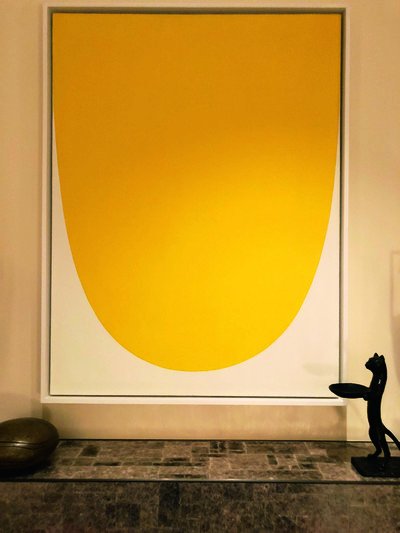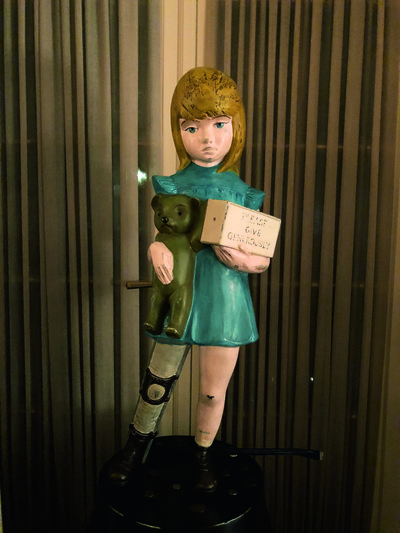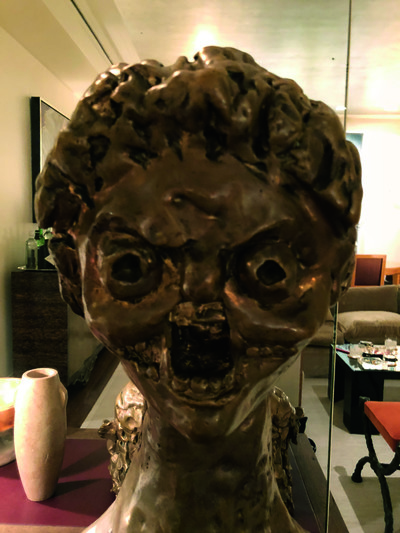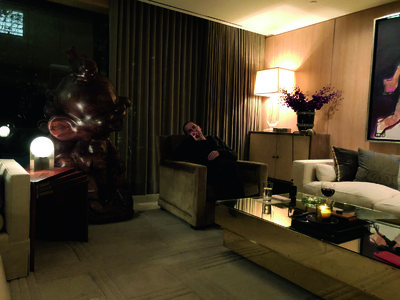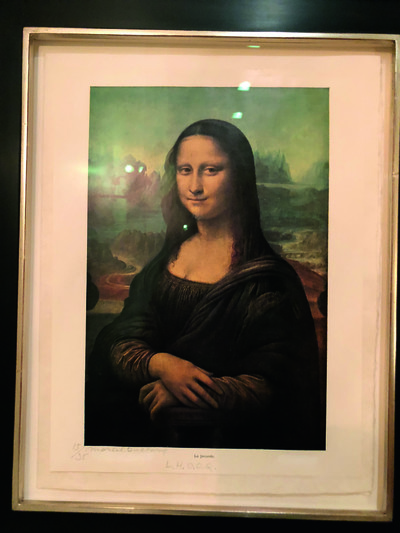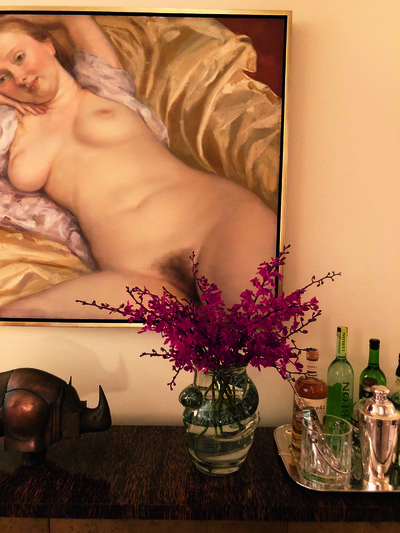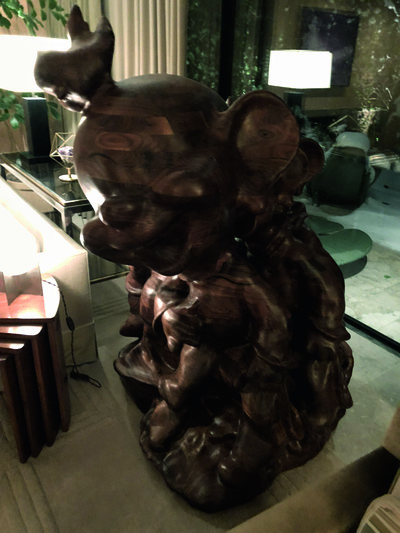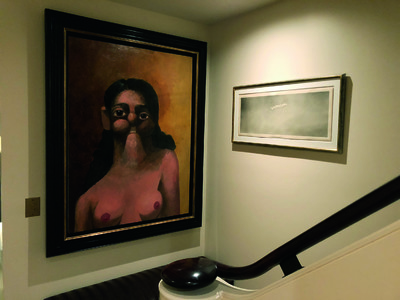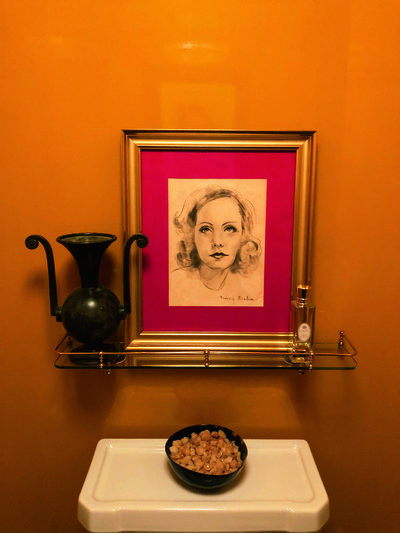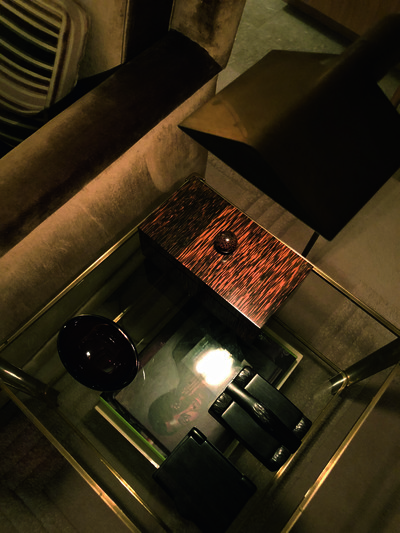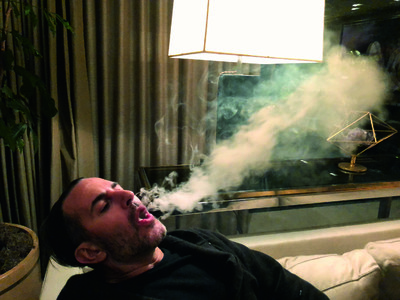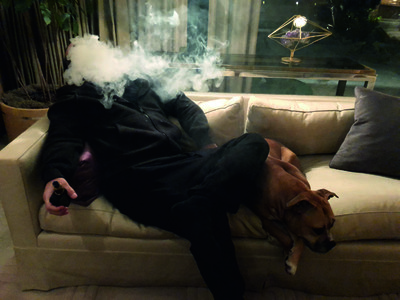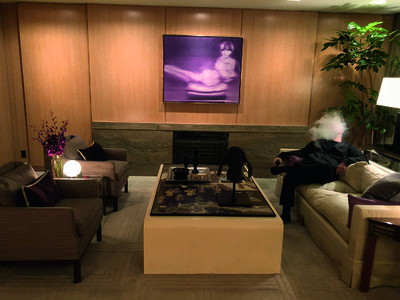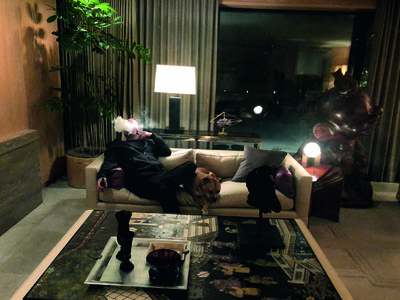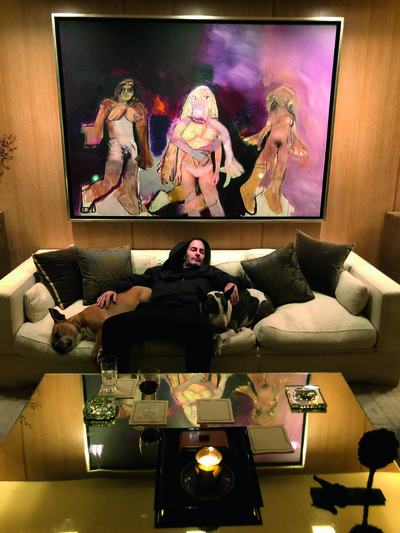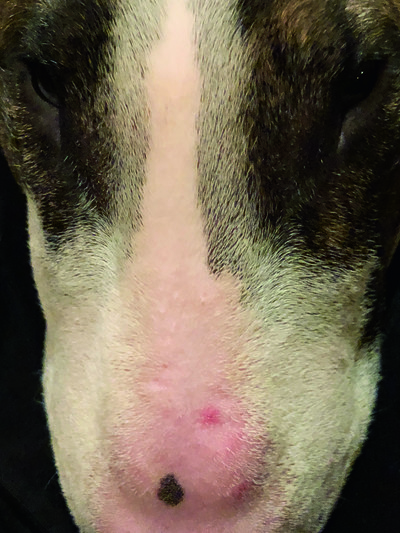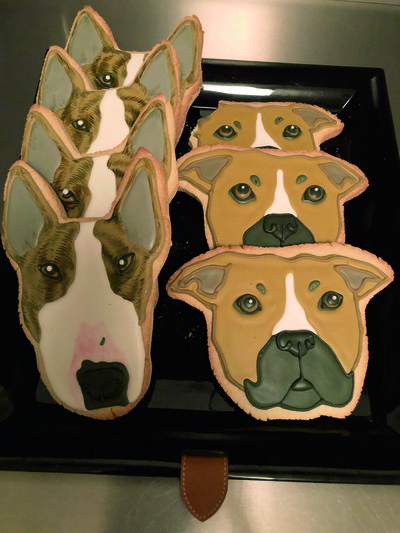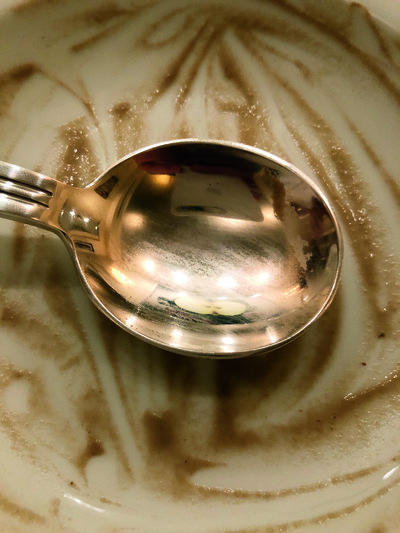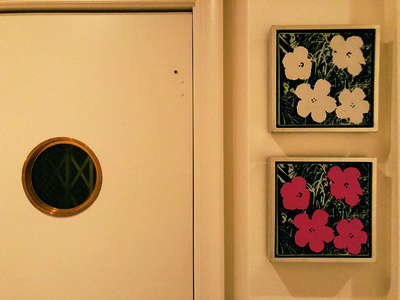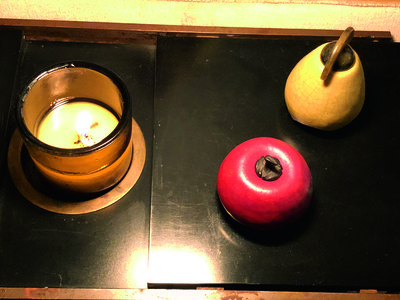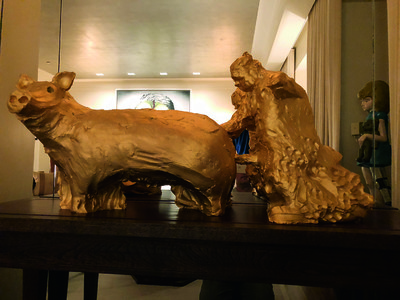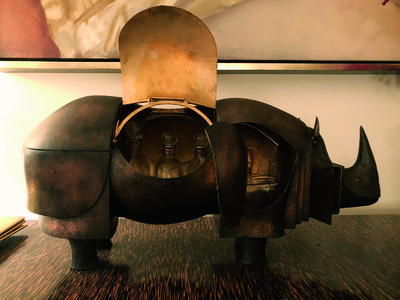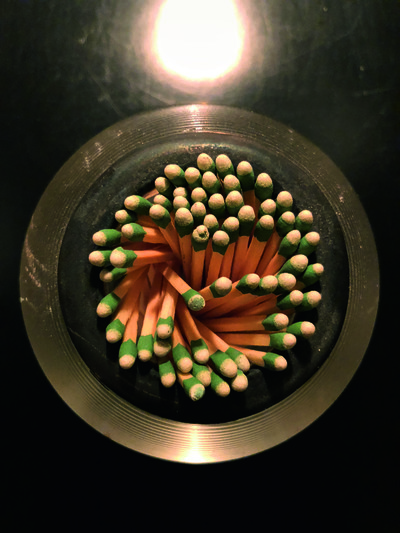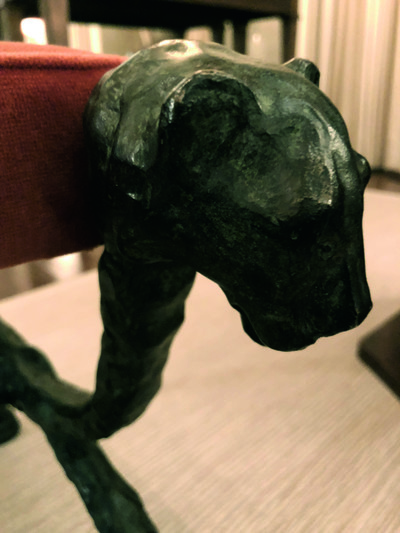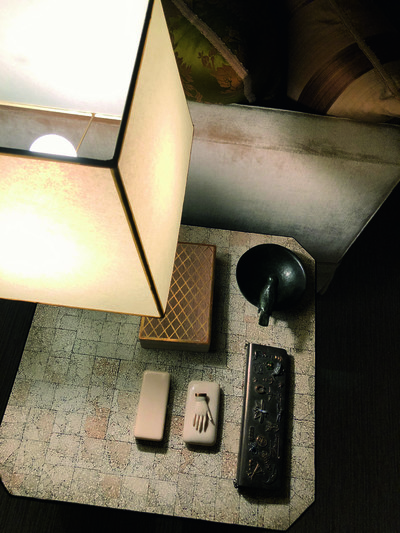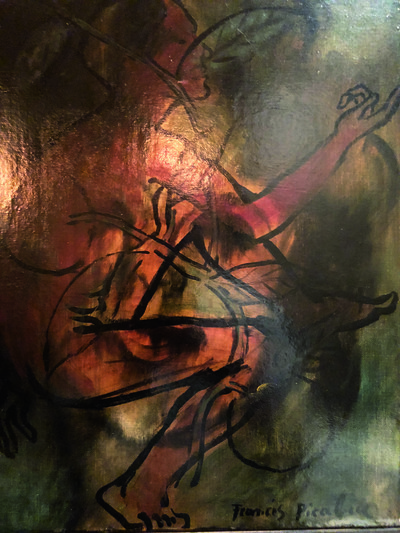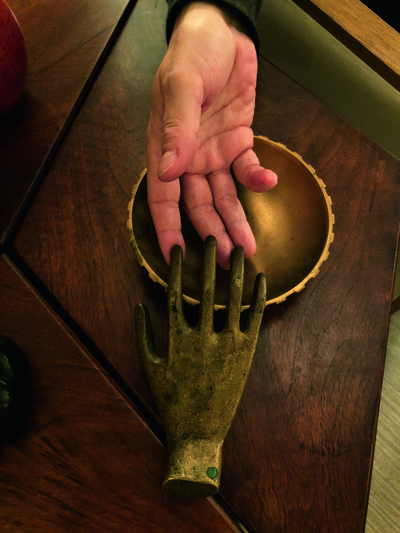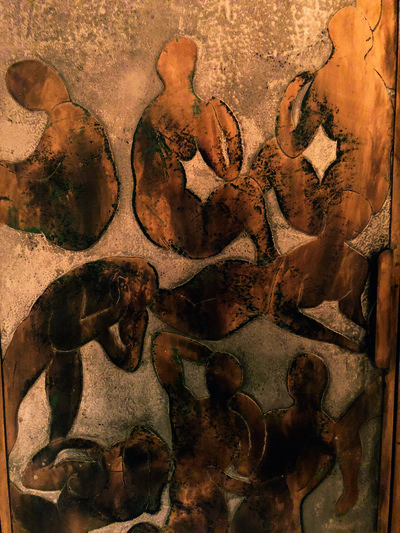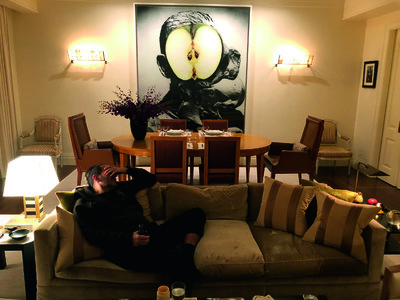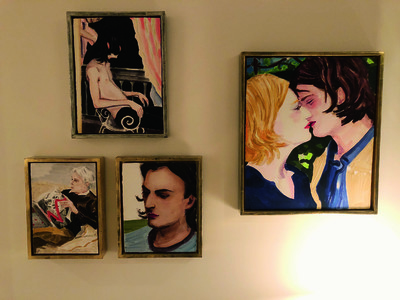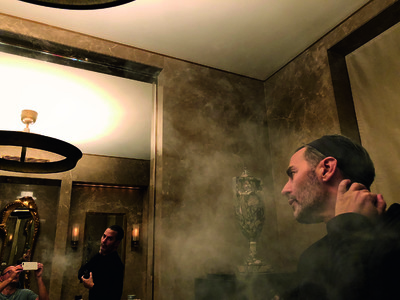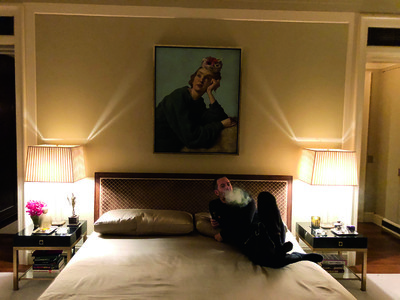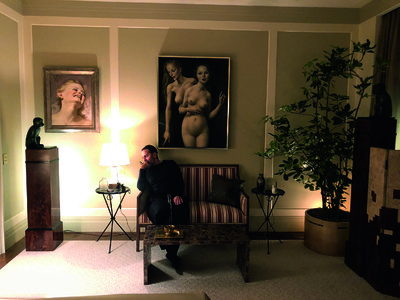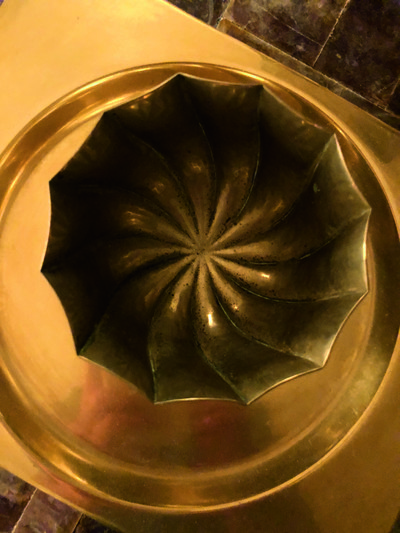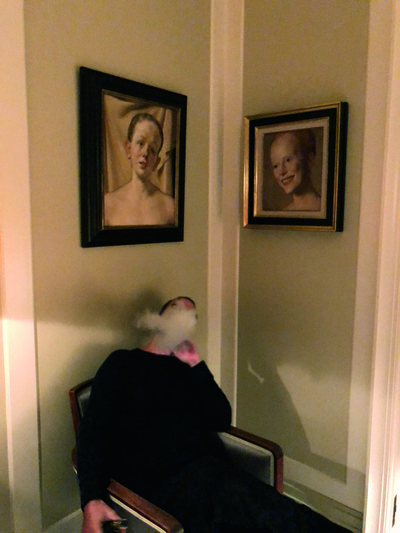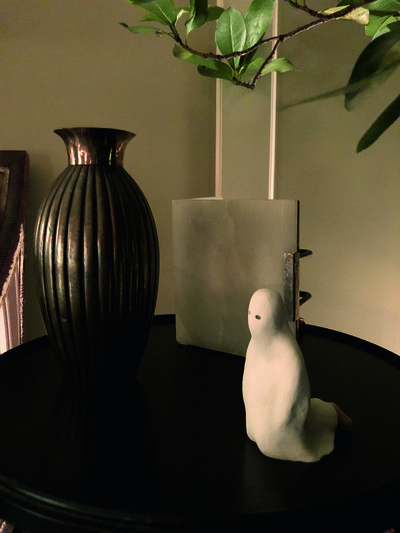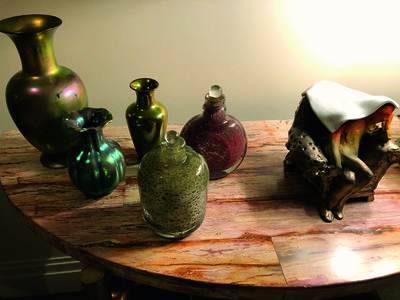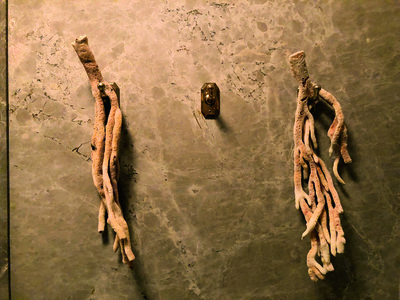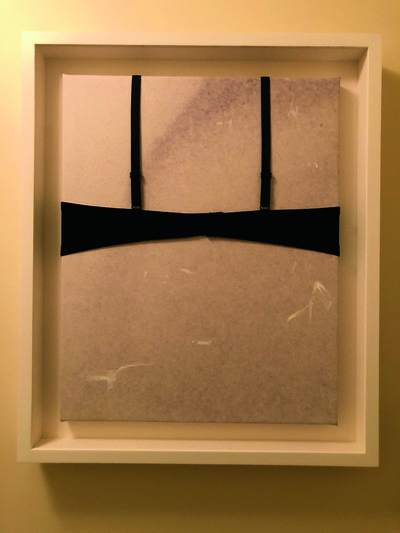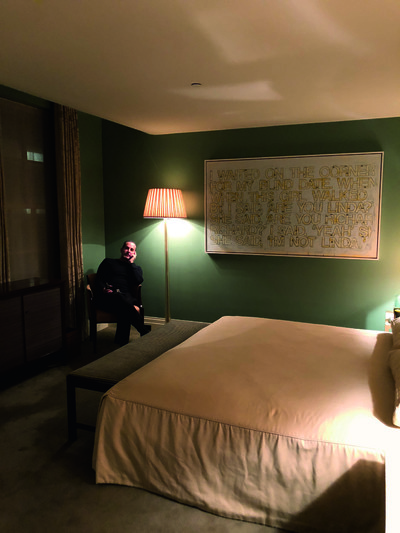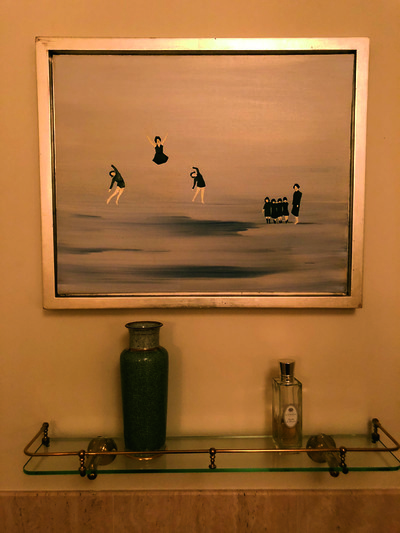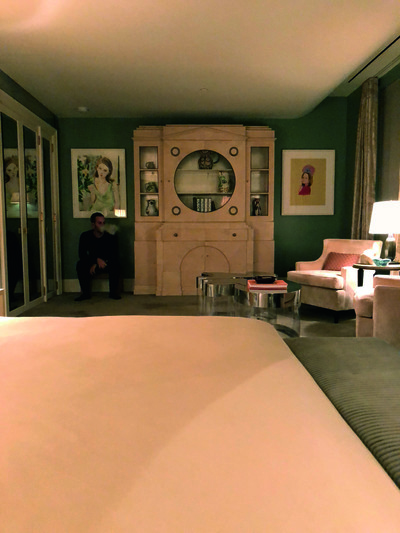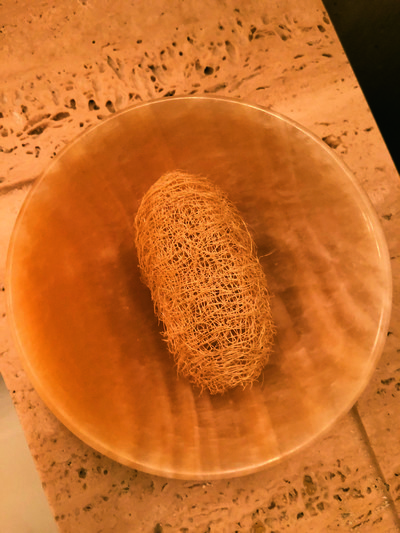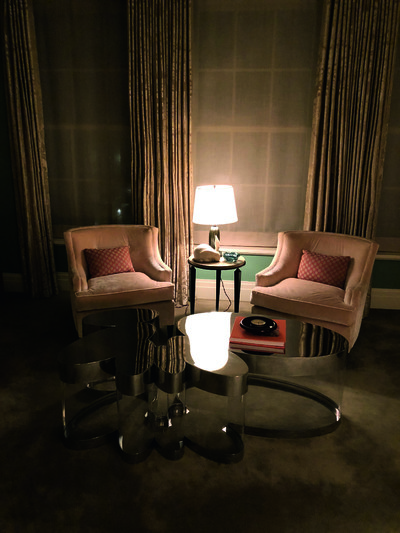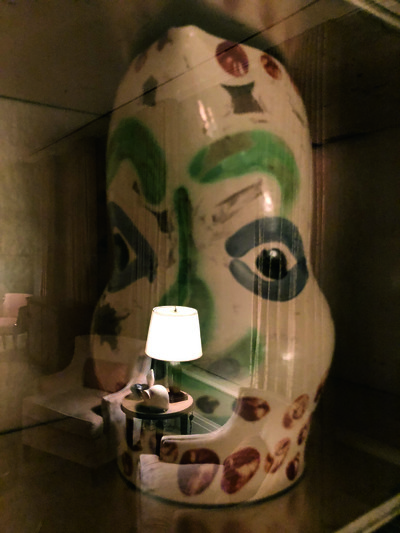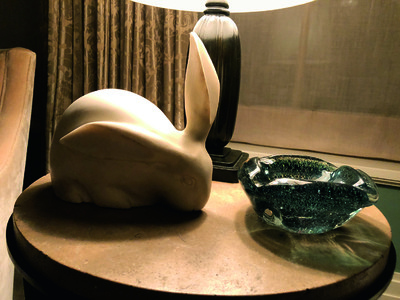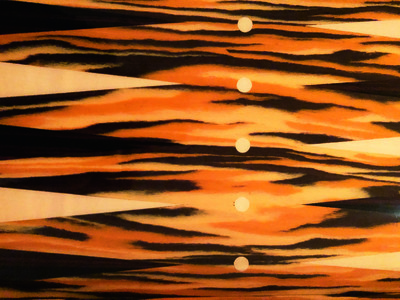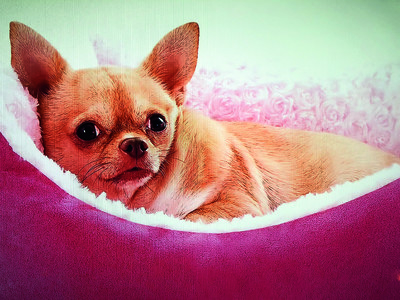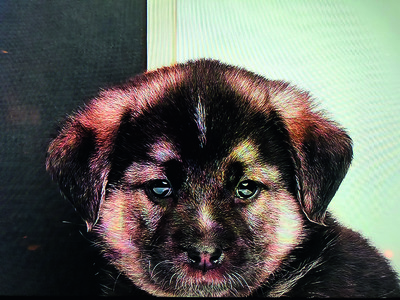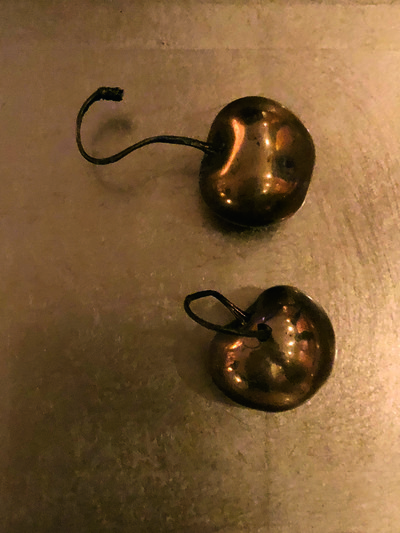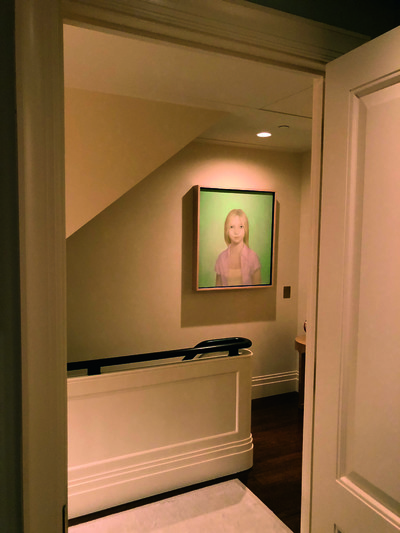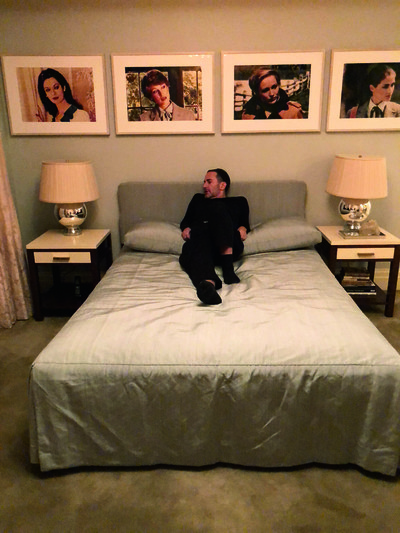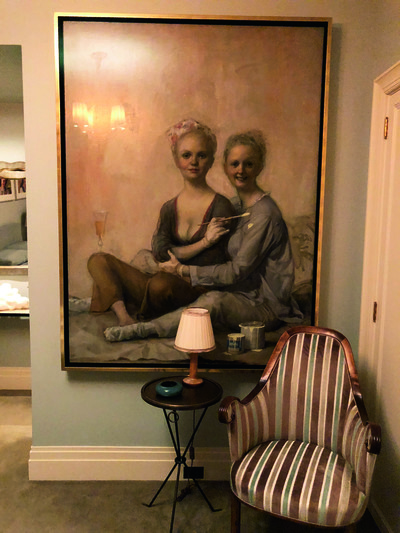With so much focus today on the diminishing size of Marc Jacobs’ business, System asks the (almost taboo) question: does it actually matter if the clothes sell? Does that make them better or worse than other clothes? Or is it simply one measure of success, one of many, to which untoward attention has been paid of late?
By Alexander Fury
Portfolio by Juergen Teller
With so much focus today on the diminishing size of Marc Jacobs’ business, System asks the (almost taboo) question: does it actually matter if the clothes sell? Does that make them better or worse than other clothes? Or is it simply one measure of success, one of many, to which untoward attention has been paid of late?
I first met the designer Marc Jacobs in real life in summer 2018, at a dinner Miuccia Prada held to celebrate her first cruise fashion show in New York. Actually, that’s a lie. I really first met Marc Jacobs thanks to Katie Grand, when I worked for her at Love magazine. In October 2012, I bumped into her as she was coming out of Hedi Slimane’s debut womenswear show for Saint Laurent. She introduced me to a small, slender man dressed all in black. ‘This is Alex, he works at the magazine,’ she said. ‘And this is Marc, he works at Louis Vuitton.’ As then, he did.
Of course, I felt like I knew Marc Jacobs; everybody kind of does. He has transcended the narrow confines of the fashion industry – a task few have managed – to reach a level of universal fame, as designer avatar, archetype, and Simpsons character (in 2007, albeit for Harper’s Bazaar rather than the TV show). You could argue that it was Louis Vuitton, where, from 1997 to 2013, Marc Jacobs was artistic director, that launched the designer into the mainstream. But, equally, it could be said that it was Jacobs – the first person to design clothes bearing a Louis Vuitton label – who transformed Vuitton from a successful, but staid luggage company into the world’s most valuable luxury-goods brand, now worth, according to Forbes magazine, an estimated $33.6 billion. Both were already well-known – Vuitton for monogrammed trunks that cost more than a car, and Jacobs, primarily, for his 1990s retooling of cool-kid duds like ballet flats and elephant-corduroy hip-huggers into fashion statements – but both were magnified by their partnership. ‘He’s remaking the world in his image,’ said the artist Elizabeth Peyton, for whom Jacobs is a long-time friend and patron, in French filmmaker Loïc Prigent’s 2007 documentary Marc Jacobs & Louis Vuitton, ‘by sending off droves of girls down the street in sequinned ballet flats and purple corduroys.’
Jacobs himself talks a little about cool. Not too much, obviously – talking about cool isn’t cool. ‘Like there are some times in the fitting rooms with our models where she’s got a cool haircut, she looks really great, and she’s standing there in this evening dress. And you’re just like, “She just looks so cool,”’ Jacobs told me this March, after his Autumn/Winter 2019 show. That show was a deflation of the arch, hyper, high-fashion clothes he had shown for the previous two seasons, kind of. It still contained ballgowns covered in thousands of hand-cut ‘feathers’ of silk organza, and vast coats whirled with fake leopard, but the models wore Stephen Jones beanie hats pulled low with brush-like plumes sticking up at weird angles, like unruly tufts of bed-head hair. ‘They look really cool in real life,’ is another phrase he sometimes throws out, almost sarcastically. ‘You start to see some of those clothes in IRL – “in real life” – and they’re not as arch.’ He actually
says ‘IRL’, before adding, as reading my thoughts: ‘I say IRL with a certain amount of sarcasm and cynicism, because real life is so staged right now.’
‘I wasn’t interested in watching sports as a kid. Didn’t want to be an astronaut. Didn’t want to be the President of the United States.’
The theme of the 2019 Metropolitan Museum of Art Costume Institute Gala is camp, and when we speak our conversation frequently veers into that territory. When Jacobs talks about ‘real life’, I’m reminded of Susan Sontag’s observation that camp sees everything in quotation marks: ‘To perceive Camp in objects and persons is to understand Being-as-Playing-a-Role. It is the farthest extension, in sensibility, of the metaphor of life as theatre.’ Yet when Jacobs talks real life, he doesn’t mean staged ‘real life’; he means actual, honest-to-goodness, real life. That’s what he finds cool. Not his designs or the designs of others, unless it’s as they are worn on the street by real people, rather than the catwalk. Yet, of course, when real life becomes fashion, it becomes ‘real life’. Fashion can only play at being real and Marc Jacobs takes it to Liza Minnelli-style extremes with, for example, a $30,000 sequinned Prince-of-Wales-check trouser suit. His collections are now ‘real life’ in the same way they have been ‘surreal’ or ‘fetish’ or, indeed, ‘camp’, all themes with which he has played. He is and they are ‘Being-as-Playing-a-Role’, his role being that of ‘fashion designer’. Heightened, of course, to the extreme.
On the record, we first met in Paris, in June 2018, four months after his Autumn/Winter 2018 show. We sat outside the Plaza Athénée, down the Avenue Montaigne from Dior, where back in 2011, Jacobs was rumoured to be in the running to succeed John Galliano, before the appointment of Raf Simons. That day he had been there for lunch with Kim Jones, the artistic director of Dior menswear, who worked with Jacobs at Louis Vuitton. We end up talking three times, once in Paris, once in New York, and once on the telephone. Karl Lagerfeld used to say that people who misdialled and accidentally called the private number at his Chanel studio on Rue Cambon recognized his voice. I thought the same as I talked to Marc Jacobs: his voice is as recognizable as his appearance. It’s dry, distinctly New York, or to borrow Jacobs’ words: ‘Obsessive, insecure, Jewish, New Yorker.’ Jacobs was born in the city in 1963, and brought up by his paternal grandmother in an Upper West Side apartment near the New York Historical Society and Central Park. He used to sneak out to Studio 54 as a teenager. He recalled his grandmother taking him shopping: ‘She’d go to Bergdorf Goodman, Saks Fifth Avenue; she’d go to Bonwit Teller, Lord + Taylor. She was very of that generation – you bought different things and different pieces: “That’s where I buy my stockings; that’s where I buy my gloves; and that’s where I buy my bags.” I wasn’t interested in watching sports. I didn’t want to be an astronaut. Didn’t want to be the President of the United States. I did want to go the beauty parlour with my grandmother, watch her have her hair done, and then go to Bergdorf afterwards to try the red cashmere double-faced coat or cape. I was like that. I could do it for hours and days, and never get bored.’
He liked his grandmother’s style and style means a lot to Marc Jacobs. Talk to him about it and the name of Katie Grand comes up a lot. She has worked with him since 2005, styling the Louis Vuitton shows from then until 2013, and his own-label shows, and others, since 2012. Her impact runs much deeper, though: for a couple of weeks before each show, she hunkers down at Jacobs’ headquarters on Spring Street for long days and short nights as the collection comes together. The process has been documented a few times: briefly in Loïc Prigent’s film, and more recently in videos uploaded to Jacobs’ own Instagram. The latter seemingly began as a way to explain why, after a decade of showing precisely on time, Jacobs’ Spring/Summer 2019 show ran about 85 minutes late. It revealed some of the complex techniques used to construct the clothes, such as feathers creating fake fur effects in leopard prints, and silk petals smothering dresses. Jacobs’ thought
processes are linear; he is focused and precise, according to Grand. ‘He formulates so much in his mind,’ she told me. ‘I’m really lucky in that he always has taste; he always has really good instincts. He’s always right.’
‘People say, “Oh, you’re more of a stylist than a designer.” Whatever. I couldn’t care less about labels. I’m not an inventor; I’m no Azzedine.’
Alexander Fury: What’s your relationship to styling? Do you see being a stylist as part of your job? You’ve worked with Katie for a long time now and with Venetia Scott for a long time before that.
Marc Jacobs: People always say, ‘Oh, you’re more of a stylist than a designer.’ Whatever. I couldn’t care less about labels. I’m not an inventor, that’s for sure; I’m no Azzedine. I design clothes, and, yes, they have references to other clothes, and other things I’ve seen before, and I’m totally fine with that. But do I put them together in a way that I think requires style? Yes, I do. So whatever word or label you want to put on it, I like the process of putting it together. I like being involved in the design process and I like being involved in the styling process. Because, again, it’s the image I’m interested in at the end, how the girls look. Whether they’re going to a funeral or a punk concert, what attracts me is what they’re wearing, what they look like. The identity that they create. That’s what the draw for me in fashion is. It all begins there.
What first excited you? Was it fashion imagery or the clothes and how people put together clothes?
Probably fashion imagery. Again, it wasn’t necessarily the reality of what it looked like. Although, in some cases it was – especially with the punk scene.
Where the reality was the fantasy?
Exactly. They were going to a place where that fantasy was real.
The first time I spent any length of time with Jacobs was unofficially in New York, at that Prada dinner. Jacobs is a passionate admirer of Miuccia Prada; he wears her clothes most frequently, along with Rei Kawakubo’s Comme des Garçons. The dinner was a ‘dinner’, a playing-at-being event. Guests, many not eating much, were clustered at smallish tables; Miuccia Prada was sat with Anna Wintour, and I was between Jacobs and Chloë Sevigny, an old friend of Jacobs’, not of mine.
Do you remember, she said to Jacobs, when we first met? Jacobs, incidentally, had just been thinking about that: she was at Limelight, topless, in a Perry Ellis skirt. I listened and thought, Could anything be more New York than that recollection? Later she recalled appearing in the video for Sonic Youth’s ‘Sugar Kane’, alongside Jacobs. It was shot in the Perry Ellis showroom while he prepared models for the ‘grunge’ collection that he would show a few weeks after the video was shot in 1992 and which would get him fired before it was released in February 1993. Jacobs, it transpired later, had been thinking about that collection because he was going to reissue it. It would be a 25th(-ish) anniversary hurrah, a quarter of a century since he got canned for exactly the same reason Yves Saint Laurent left Dior in 1960 – because he dared to bring a feel of what was going on the streets at that moment into the rarefied and fabulist environs of high fashion. Or to put it another way, because he showed real life or at least, ‘real life’. ‘I wanted them to look the way they do when they walk down the street, which is not dolled up,’ Jacobs explained to the New York Times in February 1993. ‘I didn’t want them to look like drag queens, and I didn’t want them to look like creatures …That’s the way beautiful girls look today.’ Yves Saint Laurent did it by showing a ‘beat’ collection, of clothes influenced by the black-clad existentialist beatniks of the Parisian Left Bank; Marc Jacobs’ show was inspired by the Seattle-based ‘grunge’ music scene. The two collections bear comparison: neither was documenting an emerging scene – their scandal lay in their appropriation of counterculture, which was revolutionary in an haute-couture salon in 1960 and, oddly, seemed to cause as much of a fracas in 1992 New York. For his collection, Saint Laurent created a black leather jacket, a blouson noir, which is also a French colloquial term for yob, the kind of hooligans Dior’s couture clients feared and loathed. Saint Laurent’s version was in crocodile, lined in mink, similar in their ‘high-low’ mix to Jacobs’ silk ‘grunge’ dresses and cashmere thermal underwear – high-fashion reflections of realities. Back in 1960, the controversy led to Saint Laurent being conscripted into the French army: Dior’s owner had deferred his call-up three times, but did not again, and he was quietly replaced with designer Marc Bohan. Perry Ellis pulled the plug on the entire high-fashion line Jacobs had been designing, even as the rest of the industry was shifting in line with his vision; the next season, it was everywhere. Even Chanel showed a ‘grunge’-inspired collection, with trailing shirts, laddered knits and heavy combat boots. Being fired was the impetus for Jacobs and his business partner Robert Duffy, who had supported him before and during his time at Perry Ellis, to prepare the launch of the designer’s eponymous label. This new incarnation of Marc Jacobs showed its first collection the next year on Saturday April 9, 1994, the real-life Marc Jacobs’ 31st birthday. That show was watched by the designer’s contemporaries including Anna Sui and Gianni Versace, whose styles Jacobs’ ‘grunge’ helped to put out of fashion almost instantaneously. But that now seems a lifetime ago, or rather, several.
Marc Jacobs has spent his life in fashion – and during that time, he’s lived a multitude more. He began in the 1970s as a stock boy at Charivari, a now-shuttered relic, but in 1978, a pillar of the New York avant-garde; it later sold his first collection of hand-knitted sweaters bearing giant polka-dots and smiley faces. Jacobs studied at Parsons School of Design, graduating in 1984, and, with help from Duffy, established his own label in 1986, with backing from a variety of sources, including Onward Kashiyama, a Japanese retail conglomerate. His first collection featured trompe l’oeil hands clutching at waists, an idea Jacobs has returned to several times. In 1988, the 25-year-old Jacobs was picked by Perry Ellis to run its womenswear line, after the death of its eponymous founder two years earlier. The label was then a $100-million business, as opposed to Jacobs’ own shoestring, increasingly embattled operation, which was being derailed both by shifting investors and unmitigated disasters, such as a fire that destroyed his Winter 1988 collection and fabrics two months before the show. When his hiring was announced, Ellin Saltzman, then corporate fashion director at Saks Fifth Avenue, enthused to the New York Times that it seemed ‘as brilliant a move as Chanel hiring Karl Lagerfeld’.
For five years, it was, but then it wasn’t. The ‘grunge’ scandal hit, Jacobs lost his job, and Perry Ellis folded its entire womenswear line. Suzy Menkes, then of the International Herald Tribune, distributed badges at the following Milan fashion week with the slogan ‘Grunge is Ghastly’. In the Washington Post, in an article entitled ‘Grunge. Wearing Out Its Welcome’, Cathy Horyn panned the show: ‘A red vinyl car coat seemed calculated to offend by appearing as clammy and crinkled as old diner leatherette. Who’s kidding whom?’ Yet in the long term, fashion changed. ‘Twenty years after “grunge”, Cathy wrote a huge, beautiful apology for everything she’d written,’ Jacobs says. ‘But it was interesting talking to Cathy about it. She said: “We as critics, we don’t ever learn. We’re always the first to shoot something down. Which is exactly what we’re in this for.”’
‘Me, and my obsessive, insecure, Jewish, New Yorker mind, I’m just like, “They hate me. They hate me. They hate me.”’
I think all critics are like that – and it always feels two-faced. When you see a designer, you’re pleasant, nice. Then you have to go home and write what you really feel. How to lose friends and alienate people!
Maybe it’s cynical, but for many years, people would come backstage, and say they liked it and then two days later, you’d read the worst review of your life. That was the case with Suzy [Menkes] sometimes. She’d say, ‘Oh, that was great. Tell me all about that.’ And then it’s like, just trashed. So you don’t really know whether people like it or not. I’d always check with Grace Coddington, and there were a couple of people who I felt would tell me honestly whether they liked it or not. And there was always a bunch of people you’d see after the show who would be polite: ‘Oh, thank you for having me.’
That’s what I always do now. No opinion. I say, ‘You must be exhausted.’
‘You must be exhausted. Thank you so much for having me.’
Or ‘congratulations!’
And me, and my obsessive, insecure, Jewish, New Yorker mind, I’m just like, ‘They hate me. They hate me. They hate me.’ Then, I’m always checking with Katie: ‘Did you hear from anybody? Did anybody text you?’ And she’ll say, ‘Well, people that matter said that they liked it.’ And I know who matters to her. We all have our group of people; they know what they’re looking at. Even if it’s critical, even if it’s something they didn’t like, I feel, ‘They know what they’re looking at and I respect that. They’ve seen other shows, and they know fashion, so I’m good with that.’ That doesn’t hurt. But sometimes, you just feel like, ‘I’ve had enough of everybody being hateful.’
It’s also very difficult when you have worked on something so hard, for so long, had no sleep, and then to have someone say, ‘I didn’t like it.’
Again, there are people you hear that from, and it’s OK. Sometimes, I don’t even know myself when they are actually good or not, even after watching the video. It’s funny. I think it probably started the last couple of years at Vuitton, where I would be so delirious and tired – the fatigue was so extreme – and I would just say to Katie: ‘Was that OK?’ And she’d say ‘Yes, it was great.’ I’d say, ‘Really?’ Then, I’d have to rest, and then watch the video, and then form my own opinion. I think it started back at Vuitton with that Carousel collection. That was the first one where I was like: I really have absolutely no idea. Did that actually work? Did it look good? Did any of it come off the way we hoped?
‘Suzy Menkes would say, “The show was great! Tell me all about it.” And then trash it two days later. You never really know whether people like it or not.’
Today, at the time of writing, Marc Jacobs is 55, about to turn 56. Three days before that birthday, he’ll marry his fiancé, Char Defrancesco, in New York City; Jacobs proposed in April 2018 by organizing a flash mob in a branch of Chipotle. The world is almost as familiar with Defrancesco as it is with Jacobs; the designer is an avid user of Instagram, and his fiancé obviously features heavily. Instagram is another means through which Jacobs showcases his role as ‘fashion designer’; he has 1.1 million followers who look up to him, interact with him, see him on private jets, at private parties, in his art-filled home (Jacobs in front of a John Currin), and at art galleries (Jacobs in front of an Andy Warhol). They also know his dogs. In 2015, Jacobs posted an image of his naked lower-half (risqué but not explicit) to his account. It was intended as a private message to another user, and Jacobs later took it down. ‘I apologize to anyone it offended,’ Jacobs wrote underneath. ‘I’m a gay man. I flirt and chat with guys online sometimes. BIG DEAL!’ Later that year, the New York Post wrote an item about Jacobs hosting a 10 person orgy. It’s difficult to think of other designers whose personal lives engender such exhaustive public interest, except, perhaps, the late Karl Lagerfeld, who performed his roles of fashion designer and ‘fashion designer’ with equal, if not more, aplomb. They also both had ponytails for a period.
Marc Jacobs loved Karl Lagerfeld and attended his first ever Chanel show with the Winter 2018 ready-to-wear shows in Paris, accompanied by Defrancesco. He loved it, because Marc Jacobs loves fashion. Which was the idea behind us meeting. I love fashion, too, and I’m fascinated by Marc Jacobs, especially by his most recent three collections. They haven’t turned fashion upside down or inside out; they weren’t seismic, like ‘grunge’. In a sense, if ‘grunge’ was ‘real life’, these collections have been ‘fashion’: playing-as-being high fashion that simultaneously actually is. To return to social media, after Jacobs’ Autumn/Winter 2018 show, I tweeted a number of pictures with the caption: ‘This is fashion history.’ Many replied, some agreeing, other incensed, asking if, how and why this could possibly be fashion history. What I actually meant was that the show itself was showing fashion history: Jacobs’ wide-swinging references to the work of Lagerfeld and Saint Laurent, Claude Montana and Azzedine Alaïa, Perry Ellis, Carolina Herrera and Stephen Sprouse, as well as all of the above and more as seen and digested on the pages of Vogue in photographs, and possibly more interestingly, in the illustrations of Antonio Lopez and Tony Viramontes. Jacobs’ models looked like all those influences’ work literally come to life, all striding along the spotlighted catwalk at the Park Avenue Armory. As such they were similar to quite a lot of things, but nevertheless quite unlike anything seen before.
That show polarised, almost as much as his ‘grunge’ show did. I asked Jacobs: would you prefer people to love it or hate it, rather than be, ‘You know, it was nice.’ ‘Yes, absolutely,’ he replied with a wry smile. ‘Nobody strives for mediocrity, right?’
Before Jacobs’ Spring/Summer 2017 show, I interviewed Katie Grand. ‘It’s like going into battle,’ she told me, of the pre-show preparations. ‘And you’re not sure how that battle is going to go.’ Cathy Horyn called the Autumn/Winter 2018 show a ‘sumptuous funeral’, Vanessa Friedman a ‘requiem’. Bridget Foley hurrahed it across the cover of WWD as ‘real fashion, powerful and undiluted’. Another attendee – a businessperson – sniped to me later during London Fashion Week: ‘The atmosphere was leaden.’ I asked where she had been seated, because in my section I had been reminded of Diana Vreeland’s quote about a Balenciaga show: ‘everyone was going up in foam and thunder.’ Personally, I was sliding out of my chair on to the floor. ‘You must love this,’ another member of the British press screamed at me, across the catwalk. I did.
Which is why I wanted to talk to Jacobs. So there we were, outside the Plaza Athénée on the Avenue Montaigne, under a fine cooling mist, to which Jacobs was adding a cloud of vape smoke. He’s given up smoking – the one vice that remained after two bouts in rehab – but now vapes incessantly. In New York, when I filmed with him, the vape smoke would rise like dry ice between takes, giving him the look of a 1930s matinee idol.
On that Parisian terrace, we started by talking about that Winter 2018 show, because we hadn’t, bar a few Instagram messages. I never did go back and see Jacobs during New York Fashion Week; if I had tried, he wouldn’t have been there anyway. ‘I run out. I don’t like to do those things anymore,’ he said, before vaping. ‘Working as Katie and I do, it’s two nights without any sleep, basically. Honestly, what happens is, I start hearing and seeing things – literally hallucinating, having audio and visual hallucinations. Then the show’s over, there’s an adrenaline rush and then this crash where I just sort of feel dizzy and I can’t feel the floor below my feet.’ Vape. ‘I was like, “No wonder what I say makes no sense to anybody. It doesn’t make sense to me.” I just want to get the fuck out.’ Vape.
‘When you’re doubting yourself, just think, what would Yves [Saint Laurent] do? What colours would he do? What shape? How would he show it?’
I never used to go backstage, because I would always think, ‘I don’t want to be told what to think about this. I just want to form my own opinion.’
I’m not comparing fashion to art at all, but I know that when I go into an exhibition, I really prefer just to react to what I see. I either like it and can explain why, or I love it and I can’t explain why, or I dislike it and know why. Whatever the reaction, though, if I really love something, then I am curious as to what was going on and I want to explore it further. It’s the same with Prada: I love seeing it, and I know I always have a connection to it. Then I’m interested to hear what Miuccia has to say.
There was so much in the Autumn/Winter 2018 collection. People said, ‘It was so Yves Saint Laurent.’
But it wasn’t!
And I said, ‘But it was so Geoffrey Beene.’
And Claude Montana, Romeo Gigli, Stephen Sprouse, Tony Viramontes. There’s always a bit of Saint Laurent in everything; there always will be. That used to be a thing that a friend and I would say, ‘When you’re doubting yourself, just think, what would Yves do? What colours would he do? What shape would he do? How would he show that?’ That has always been an internal mantra for me. For that collection, Katie and I began by looking at old Elle magazines – that moment when Elle first started in America – and that quickly became nothing. Then we were looking at images and came
across one of David Bowie in a boater. And we were like, ‘Oh, that kind of looked good.’ We called Stephen [Jones], and said, ‘We kind of like the idea of a hat.’ Then, I started to become a little bit more pensive with it and thought, ‘We don’t want this to be street-inspired.’ Then during the process I began looking at runway shows, when runway models had their hands on their hips, when there was attitude.
Again, that’s very that Yves Saint Laurent. Dalma walking up and down until people applauded enough for her to exit.
Runway, runway, runway. I just kept saying it over and over, throughout the season; ‘I think it should be a runway show.’ It sounded as archaic as saying ‘blouse’ – and I thought that was its charm. Draped and wrapped in fabrics and attitude, the shoulder and the glove. The whole thing. It just sort of felt… right. Then we went and looked at some images from Karl’s Chloé that I had loved, and remembered. There were a million references in there – and it just felt nicer to look at all that stuff rather than a tracksuit.
I felt that with the Spring/Summer 2018 collection, as well. That show was super fashion, and this latest one was taking it to another level again. It was just a love letter to fashion.
It was funny, because some people afterwards were like, ‘That was like the biggest fuck you.’ And I was like, ‘Fuck you!’ I don’t know why some people got it in their head that there was that kind of aggression in it. I don’t do it to say ‘Fuck you’; I’m not trying to piss anybody off.
In June 2018, the New York Times ran a story with the bold, confrontational and vaguely vulgar title: ‘How Marc Jacobs Fell Out of Fashion.’ It detailed the rocky road upon which Jacobs’s business was and is travelling, including store closures. LVMH does not reveal the income of individual brands, but in a January 2017 earnings call, the group’s CEO Bernard Arnault commented: ‘I’m more concerned about Marc Jacobs than the US president.’ The remark was widely reported. In one of our conversations, Jacobs talked a little about his Autumn/Winter 2018 advertising campaign, shot by Steven Meisel, of luxuriantly attired and coiffed models being dragged around by Dobermann pinschers, which had reminded me of Chris von Wangenheim’s images of Christie Brinkley apparently being savaged by a dog wearing a diamond collar. ‘We got reactions from fashion people who loved it,’ said Jacobs. ‘I’m not sure a customer could….’ He interrupted himself. ‘I mean I don’t know if we have a customer at this point.’ He was joking, but still sounded pissed off. As you would if you’ve been second guessed and criticised, while putting out work that is arguably (but without many arguments) your finest to date.
‘Maybe this is the part I’m holding onto, more than anything,’ Jacobs says, hurriedly. ‘If I think about why I do this – yes, I know there’s a responsibility to the business, and we all have to sell things, and all that kind of stuff, but the show, it’s still so precious to me. Whatever it is, whichever the collection, I just feel it should be untouched, nobody should interfere with its thing. What we decide that should be with any given season might change, but nobody should fuck with it. A
show is just a precious thing, and it should always remain that way.’ On the recording, Jacobs voice trembles a little. Maybe it’s the sound; maybe it was the vape.
‘I know there’s a responsibility to the business, and we all have to sell things, and all that kind of stuff, but the show, it’s still so precious to me.’
If Jacobs started off being fixated with the real, his ideas have gradually become more grandiose, expanding from the street until they have become their own world, running parallel with our own. He designed that ‘grunge’ collection, but he has also erected a petrified, post-apocalyptic beach peopled with Victoriana-clad surfers; resurrected Diana Vreeland; and taken over the Ziegfeld Theatre in New York to present his own follies in a mostly red, white and blue collection that finished up on Bette Midler (and that wasn’t even the ‘camp’ show). That’s no small order, and Jacobs is one of the few designers left in the world with the raw talent to achieve it; you can probably count them on both hands (you’ll maybe need a foot, too). Jacobs’ fashion shows are extraordinary feats. The past half-dozen have been relatively stripped-back affairs (although Autumn/Winter 2019 was soundtracked, live, by the American Contemporary Music Ensemble, which isn’t exactly minimal), yet the clothes – stronger than yesterday, more singular, maybe because fewer fucks are given – have perhaps had even more of an impact. They have carried the audience, as well as propping up the latter half of New York Fashion Week and opening each season.
Marc Jacobs is known for a seasonal shift, every collection an apparent volte face from its predecessor. That ‘camp’ season (Spring/Summer 2011, at Louis Vuitton, with a faux-marble runway and a pair of stuffed tigers) was followed by the ‘fetish’ season (Autumn/Winter 2011, with the Park Avenue Armory padded in whiplash plastic), a sugary-sweet turn for spring (Spring/Summer 2012), then turning into a winter season of enormous fur hats and a Vuitton show that was rumoured to have cost $8 million and featured a steam train pulling alongside a custom-built platform. Each was done, he says, ‘knowing full well that four months later, you’d be saying something else. But that’s just it, we work towards saying something and projecting some sort of spirit, but then that’s it, it’s here and then gone.’ Having said that, though, his Spring/Summer 2019 collection explored similar ideas and silhouettes to the previous Autumn/Winter: ‘I was very happy with Fall and I still felt there was a validity to it, and I wanted to make it prettier. I increased the number of references, which I didn’t do deliberately, it just happened, as images came into my head of a funny old Halston collection from 1981, or whatever,’ said Jacobs. ‘What I was still holding on to for the Fall show from Spring was the idea of that moment when the silhouette was powerful. So even if it became prettier or more romantic, the ruffles still had horsehair in each of the hems, and were bound in satin. So they created a shape and a silhouette. The shoulder was still square and extended, and the sleeve still had the seam to create even more width. I would say we certainly kept some of that authority, and power.’ Which is arguably trickier to pull off in a puffy pink dress than in a boulder-shouldered suit.
‘This is a whole other conversation,’ said Jacobs. ‘Maybe I get too political or social but, you know, Lady Gaga wore that suit with the big shoulders and she said how it gave her a feeling of power, but I think a really powerful woman wears whatever she wants. It really doesn’t come down to how long or short her hemline is, how wide or narrow her shoulders are, how pink or blue, how grey or black, how navy. The power comes from the person, not from the clothes. And again it seems like a much more contemporary conversation to say: “I feel good in this and I’m gonna wear it, and I don’t really care what you think of me – and you still have no right to touch me, no right to call me names. No matter what I wear or what I look like, I do this for me.” That’s the interesting thing to me.’
Part of the Spring/Summer 2019 collection was inspired by the work of Genieve Figgis, a faux-naïf Irish artist who paints quasi-historical scenes with thickly clotted paint. Her work inspired big fat ruffled, pastel taffeta dresses with crinolined hems. Jacobs, of course, has a famously enviable art collection, which has sometimes inspired shows. ‘There was a “Rachel” season that was all inspired by John’s painting of Rachel in Fur,’ says Jacobs. ‘And that was the collection where I was really inspired by what Rachel looked like. And how she dressed.’ ‘Rachel’ is artist Rachel Feinstein; ‘John’ is her husband, artist John Currin, who painted her wearing a fur coat in 2002. Jacobs based his Autumn/Winter 2004 collection on the painting, and Feinstein recreated it for that season’s advertising campaign, shot by Juergen Teller. All very meta.
‘It seems so much more contemporary to say: “I feel good in this and I’m gonna wear it. I don’t really care what you think of me. I do this for me.”’
Marc Jacobs is inspired by all sort of things, art, and books, and films. ‘I’m not abstract,’ he says bluntly. ‘I’m inspired by the work of other designers. There have been other references in the past, but they were usually very fashion oriented. I think there was a season ages and ages ago – 23 or something years ago – where I had just seen the Cockettes documentary, and so all the girls had feather boas and little sequin dresses from the 1920s, the 1940s. You know, it was all a magpie kind of aesthetic. There have definitely been films that have inspired the beginning of the conversation, or a book, like Gatsby… So there are definitely non-fashion starting points, but that’s usually because it’s the fashion in them that first seduced me.’ He’s talking now about his Autumn/Winter 2019 show, which, at first glance, was a return to reality from the fantasia of the prior Spring and Winter. ‘It’s just a big T-shirt and a knitted beanie,’ said Katie Grand about my favourite look of the show, a humbug-striped wool jersey dress, turtle-necked but tugged down to the floor (with a bustle) and a feathered Stephen Jones wool hat.
What was the thought process for that Autumn/Winter show? Was it different to the last two? Because I felt the previous one was so connected, but this was you going off on a different tangent.
I think there were two things going on. I felt a connection between the last two shows. What I did feel was very different was the attitude and look of the girls. I still wanted to make some of the clothes that we’ve been making the past two seasons; I just didn’t want to show them the way we’ve shown them the past couple of seasons. That decision was taken early on, even when just talking about the shoes, which was before even the clothes. We were like, ‘Oh, brown shoes.’ It was that random, and that dictated what came after. The shoes weren’t all brown, but we wanted something casual with a girl just wearing it as opposed to her being completely done up. The second step was talking to Stephen Jones, which always happens prior to ever making a piece of clothing. I was saying to Stephen for months that the only thing I knew was that whatever we were going to do it would be based on the knit cap or the beanie. So the brown shoe and the knit cap were the top and the bottom of the look. There was going to be a casual realness somewhere in my line with girls we liked for who they were, rather than who we could transform them into.
All this talk with Marc Jacobs makes me wonder: what is the measure of a great fashion designer? There is so much focus on the size of Jacobs’ business, but hardly anyone is asking how important that actually is. So here’s the question you’re never supposed to ask: does it actually matter if the clothes sell? Does that make them better or worse than other clothes? Or is it simply one measure of success, one of many, to which untoward attention has been paid of late? Of course,
there’s a Marc Jacobs customer, but in all honesty, probably not as many as there are for other labels that are producing simpler clothes that are easier to buy and, yes, worse than Jacobs’. Less significant. Less interesting. Less brave.
‘I feel we’re missing a little bit of “fashion”,’ Jacobs says. ‘I know we can kind of “casualize” – or whatever the word would be – anything. It’s one of my favourite things to do, throw a Prada coat over a pair of jogging pants and sneakers, but it’s that other thing that seems to get lost now, that feeling of “Oh my god, it’s a show”.’ He pauses. ‘But then I wonder if you aren’t shooting yourself in the foot by doing that, because it intimidates certain people.’ He remains philosophical, though. ‘I remember going to see an exhibition once with my friend Kim, Kim Gordon from Sonic Youth. We didn’t like what we were seeing and she said, “It’s really important to see bad art sometimes.” She wasn’t being pretentious, but she was like, “It’s good; both are good.”’ You understand what she meant.
‘What propels all of us in my studio, and me specifically, is a love for fashion,’ Jacobs says. ‘I’m very honest and unapologetic about that. I’ve been inspired by fashion all my life.’ His voice is a little distant, but he is on the phone from New York, not in real life. ‘And that’s why I do this. It’s what I love.’ It’s why he’s a fashion designer. No speech marks.
